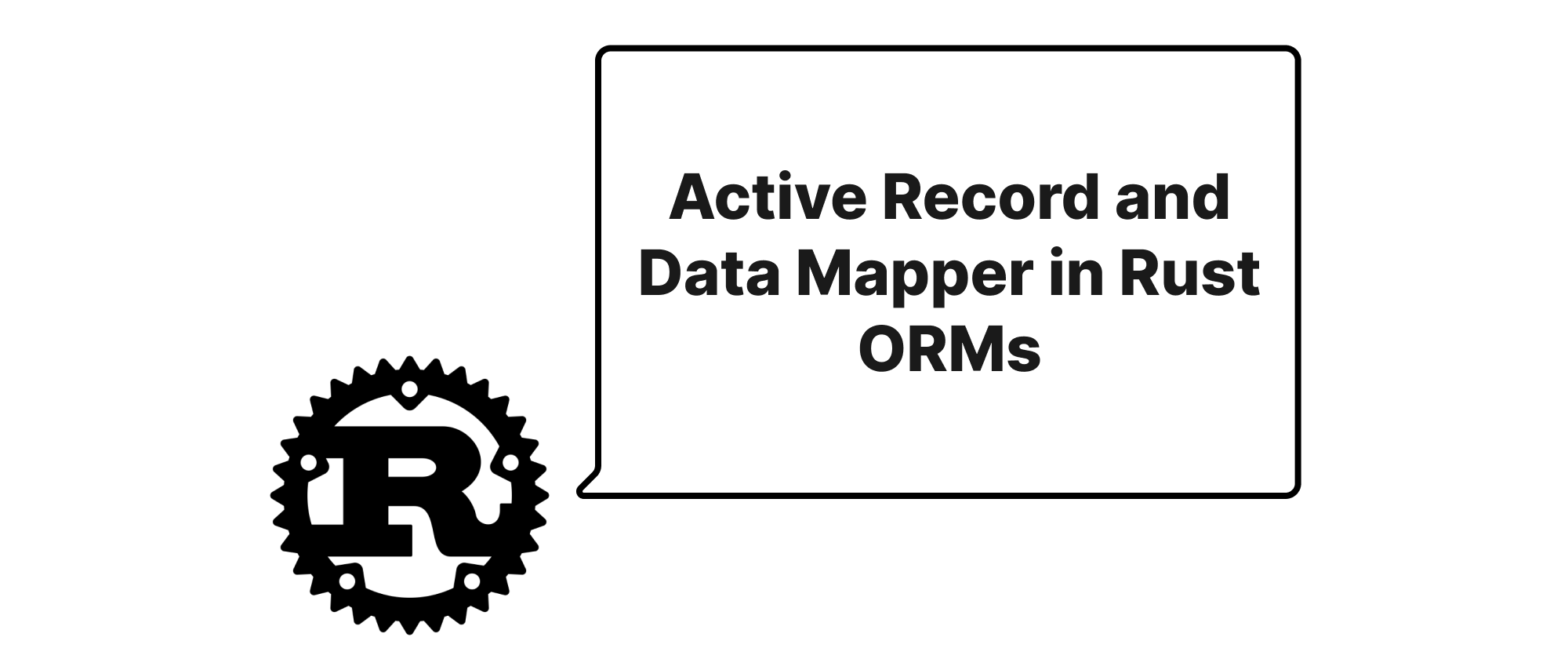Understanding Pin in Rust Async for Web Developers
Ethan Miller
Product Engineer · Leapcell

Introduction: Unlocking the Power of Async Rust
As web development increasingly demands high-performance, concurrent services, Rust has emerged as a compelling choice for building robust backend systems. Its ownership model and zero-cost abstractions empower developers to write highly efficient code with strong memory safety guarantees. A cornerstone of modern concurrent programming in Rust is its async/await syntax, which allows us to write asynchronous code that looks synchronous, making complex operations much easier to reason about.
However, beneath the elegant surface of async/await lies a crucial, often misunderstood concept: Pin. For web developers accustomed to higher-level abstractions, the need for Pin might seem like an unnecessary complication. Yet, understanding Pin is not merely an academic exercise; it's fundamental to writing correct, efficient, and safe asynchronous Rust code, especially when dealing with long-lived futures and complex state machines common in web servers. This article will demystify Pin, explaining its purpose and why it's an indispensable part of your async Rust toolkit.
Core Concepts: Laying the Foundation
Before diving into Pin itself, let's briefly touch upon some foundational concepts that are integral to understanding why Pin exists.
Futures and Asynchronous State Machines
In Rust, an async fn or an async block compiles into a Future. A Future is a trait that represents a value that might become available in the future. The core method of the Future trait is poll:
pub trait Future { type Output; fn poll(self: Pin<&mut Self>, cx: &mut Context<'_>) -> Poll<Self::Output>; }
When you await a future, the runtime repeatedly calls its poll method until it returns Poll::Ready(value). If it returns Poll::Pending, it means the future isn't ready yet, and the runtime will try again later.
Crucially, an async fn is compiled into a state machine. Each await point corresponds to a state in this machine. When the future is paused (returns Poll::Pending), it stores its current state, including all local variables that are still in scope. When it's polled again, it resumes execution from that saved state.
Self-Referential Structs
Consider a struct that contains a reference to its own data. For example:
struct SelfReferential<'a> { data: String, pointer_to_data: &'a str, }
If we were to create such a struct, and then move it in memory, pointer_to_data would become invalid, as it would still point to the old memory location of data, even though data itself has moved. This is a classic example of why Rust generally prevents self-referential structs without specific care.
The Problem: Futures and Self-References
Now, connect this back to futures. When an async fn compiles to a state machine, it can implicitly create self-references. For instance, a variable declared before an await point might be referenced after the await point. If that variable is moved (e.g., if it's stored on the stack and the entire future's stack frame is moved), the reference would become invalid.
Consider this example:
async fn my_async_function() { let mut my_string = String::from("Hello"); // 'my_string' lives here let my_pointer = &mut my_string; // 'my_pointer' refers to 'my_string' // This await point pauses the future. // 'my_string' and 'my_pointer' are part of the future's state. some_other_async_operation().await; // If the future were moved here, 'my_pointer' would be invalid. println!("{}", my_pointer); }
If my_async_function were a plain Future in a world without Pin, and the runtime were allowed to move its memory location between poll calls, my_pointer would become a dangling reference, leading to undefined behavior. This is precisely the problem Pin solves.
Why Futures Need Pin: Guaranteeing Memory Stability
Pin ensures memory stability for a value. When a value T is Pin::new'd, it means that T will not be moved from its current memory location for the duration it's Pinned. This guarantee is crucial for futures that contain self-references.
Pin's Contract: The Unpin Trait
The Pin struct itself is quite simple:
pub struct Pin<P> { /* ... */ }
It's primarily a wrapper around a pointer P. The real magic comes from its methods, particularly deref and deref_mut_unpin, and the interaction with the Unpin trait.
The Unpin trait is an auto trait. A type T is Unpin if it's safe to move T after it has been Pinned. Most types in Rust are Unpin by default (e.g., i32, String, Vec<T>). Types that are not Unpin are those that need memory stability because they contain self-references.
A Future generated by async await in Rust is not Unpin by default if it contains any self-references. This is vital: by default, the Rust compiler ensures that futures which rely on memory stability are marked as !Unpin.
How Pin Prevents Undefined Behavior
When you see self: Pin<&mut Self> in the poll method of Future, it means the runtime is guaranteeing that the Future (or at least the mutable reference to it) is pinned. This guarantee allows the compiler to safely generate state machines with self-references without risking invalid pointers.
Let's illustrate with an example:
use std::pin::Pin; use std::future::Future; use std::task::{Context, Poll}; use std::cell::RefCell; use std::rc::Rc; // Imagine some simple future that might contain a self-reference // (This is a simplified example, actual async fn compilation is more complex) struct MySelfReferentialFuture { data: String, // In a real async fn, this 'next_state' could implicitly hold a reference // to 'data' across an await point. // For demonstration, let's pretend this is a generated state variable // that needs its memory stable. } impl Future for MySelfReferentialFuture { type Output = String; // Notice the Pin<&mut Self> fn poll(self: Pin<&mut Self>, _cx: &mut Context<'_>) -> Poll<Self::Output> { // Because `self` is Pin<&mut Self>, we know that `self.data` will NOT move. // We can safely take references to `self.data` if needed within this poll call, // and these references would remain valid if this future were to be paused and resumed, // IF the future itself relies on this stability. println!("Polling future: {}", self.data); Poll::Ready(self.get_mut().data.clone() + " completed!") } } // How you'd typically run an async future (simplified) fn run_future<F: Future>(f: F) -> F::Output { // In a real runtime, the future would be allocated on the heap (Box::pin), // and then polled repeatedly. let mut pinned_future = Box::pin(f); // This Box::pin does the actual 'pinning' let waker_ref = &futures::task::noop_waker_ref(); let mut context = Context::from_waker(waker_ref); loop { match pinned_future.as_mut().poll(&mut context) { // as_mut() converts Box<Pin<F>> to Pin<&mut F> Poll::Ready(val) => return val, Poll::Pending => { /* In a real runtime, we'd wait for an event */ } } } } fn main() { let my_future = MySelfReferentialFuture { data: String::from("Initial state"), }; let result = run_future(my_future); println!("Future result: {}", result); // Another example with an actual async block let my_async_block = async { let mut value = 10; let ptr = &mut value; // ptr refers to 'value' println!("Value before await: {}", ptr); tokio::time::sleep(std::time::Duration::from_millis(10)).await; // Imagine this is a real await *ptr += 5; // Accessing 'value' via 'ptr' after an await println!("Value after await: {}", ptr); *ptr }; // To run this, you'd typically use a runtime like Tokio: // tokio::runtime::Builder::new_current_thread() // .enable_time() // .build() // .unwrap() // .block_on(my_async_block); }
The key takeaway is that when an async block or async fn is compiled and executed, if it contains self-references, the compiler will generate a Future implementation that is !Unpin, and the runtime will allocate and pin this future (e.g., using Box::pin). This combination guarantees that the future's memory location remains stable throughout its execution, thus preventing dangling pointers and ensuring memory safety.
Pin and Web Development
In web development contexts, especially with frameworks like Axum or Actix-web, you'll be dealing extensively with futures. While you might not directly call Pin::new or Box::pin all the time, these operations are happening under the hood.
For example, when you return a Future from a handler function:
async fn my_handler() -> String { let user_name = fetch_user_from_db().await; // Assume this returns a String format!("Hello, {}", user_name) }
The my_handler function itself returns an opaque impl Future<Output = String>. The web server framework (e.g., Tokio underneath Axum) is responsible for taking this future, allocating it on the heap, Pinning it, and then polling it to completion. The internal state machine of this future might contain self-references, but because it's pinned by the runtime, everything remains safe.
Where you might encounter explicit Pin usage as a web developer:
- Implementing Custom Futures or Streams: If you're building highly specialized asynchronous data structures or low-level components, you might need to implement
FutureorStreamyourself, which directly exposesPin. - Working with Unsafe Code: If you're dropping into
unsafeRust for performance or FFI,Pin's guarantees become critical for managing raw pointers and preventing UB. While less common in typical web applications, it's a possibility for highly optimized components. - Advanced Asynchronous Patterns: Sometimes, you need to store futures in complex data structures or re-arrange them. Understanding
Pinhelps you reason about when a future can be moved safely (if it'sUnpin) and when it cannot.
Conclusion: The Pin Guarantee for Memory Safety
Pin in Rust's asynchronous ecosystem is a sophisticated mechanism that ensures memory stability for self-referential data structures, particularly the state machines generated by async/await. By preventing values from being moved once "pinned," Pin allows the safe construction and execution of futures that contain internal pointers, thereby eliminating the risk of dangling references and undefined behavior. For web developers, grasping Pin deepens your understanding of async Rust's core safety guarantees, enabling you to build robust, high-performance web services with confidence. It's the silent guardian protecting the integrity of your asynchronous operations.


